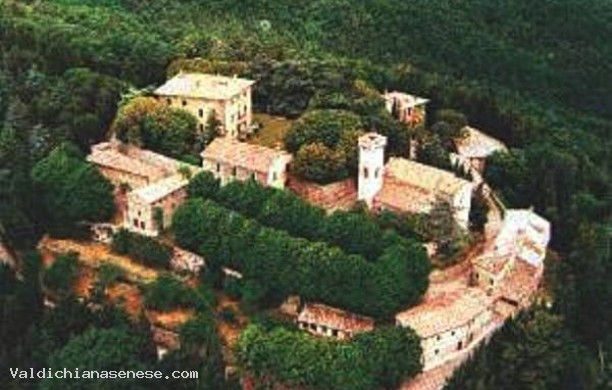> Home > What to visit > Castles

Camporsevoli Cetona
CASTLES

PHONE NUMBERS AND TIMES
Camporsevoli
Business card (vCard)
The origin of the village of Camposervoli dates back to an Etruscan settlement that probably rose nearby. The main information comes from a bordering deed drawn during the time of Frederick the Red Bearded, but it doesn’t seem improbable that Camposervoli belonged to the territory of the ancient Longobard dukedom in Chiusi. After the division of the County, Camposervoli was given to a branch of the ancient Counts Farolfingi. In the years 1232 – 1235 the castle of “Camporseldule” was the cause of a bitter conflict for its possession between the people of Siena and the ones from Orvieto, that ended up in favour of the latter, thanks to the intervention of the Florentines. Camposervoli remained under the influence of the umbrian township at least until the middle of the 1300, when it became a feud of the noble family Montemarte until, since it was involved in various internal struggles with the families of Orvieto, in 1352 it was attacked and destroyed and the walls were demolished by the Ghibelline troops commanded by the Prefect of Vico, . It was then handed down to the Viscounts of Campiglia. In 1432, after having endured several attacks and damages from the Senese troops, the castle became property of the Piccolomini family. As a matter of fact Pope Pius II gave it as a gift to his own nephews Giacomo and Andrea. In 1559, after the fall of the free republic of Siena, the Medici took over the castle of Camposervoli giving rise to the Pope’s complaints. After several long discussions , they obtained the castle with the title of Apostolic Vicars , but new problems arose with the Malaspina, that declared rights on half of the feud. Such rights were given, by the Malaspina, to the Grand Duchess Mary Magdalene of Austria that, in turn, gave them to the noble Florentine Niccolo Giugni, to whom, finally, in 1630, Ferdinand granted the entire feud. With the napoleonic suppression of the feuds, Camposervoli became, at first, part of San Casciano dei Bagni and then of Cetona. Nowadays , only a few parts of the walls and the main doorway of the ancient castle remain, while the central part of the building has been replaced by a villa. This was built by the Piccolomini in 1500, maybe on a more ancient foundation, identified as “Plebem Sanctae Mariae de Spino cum Cappella Sancti Johannis et massaritiis” cited by Pope Celestinus III in the Edict of January 1191, with which the properties of the Church of Chiusi were confirmed to the bishop Teobaldo. The crenelated bell tower was built during this century.
STAY NEARBY
AGRITURISMO COCCIANO
CETONA
The "Agriturismo Cocciano" is located in a typical tuscan farmholiday dating bac...LE RADICI NATURA E BENESSERE
SAN CASCIANO DEI BAGNI
Situated in unspoilt natural surroundings, with a view which fans out to touch southern Tu...IL BORGO DEL LUPO
SARTEANO
"Four houses", surrounded by the splendid Mt. Cetona, lies at 756 metres above t...DINING & ENTERTAINMENT NEARBY
Teatro Comunale ex Accademia dei Georgofili Accalorati
SAN CASCIANO DEI BAGNI
In this important and active center of the Valdichiana 700 was already at the end of the a...Acque Fonteverde, Parco Termale e Hotel
SAN CASCIANO DEI BAGNI
Situate ad un chilometro circa a sud del Centro Storico di San Casciano, nel raggio di ci...Parco delle Piscine
SARTEANO
Situatoa 573 metri di altitudine, in prossimità del centro storico di Sarteano,&nbs...






